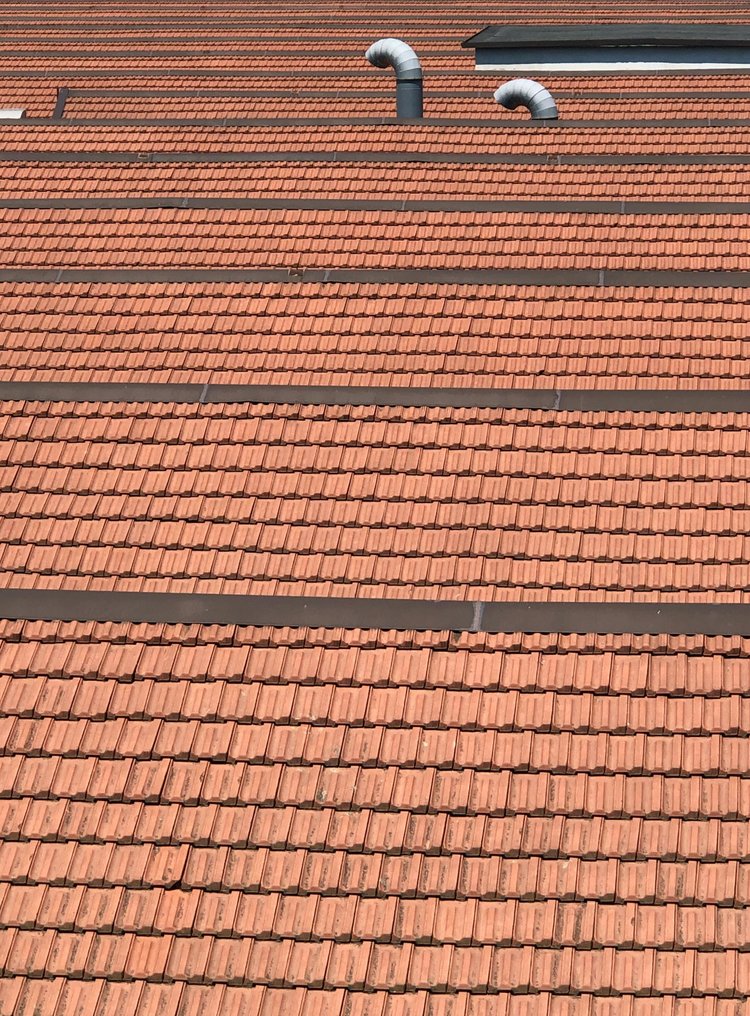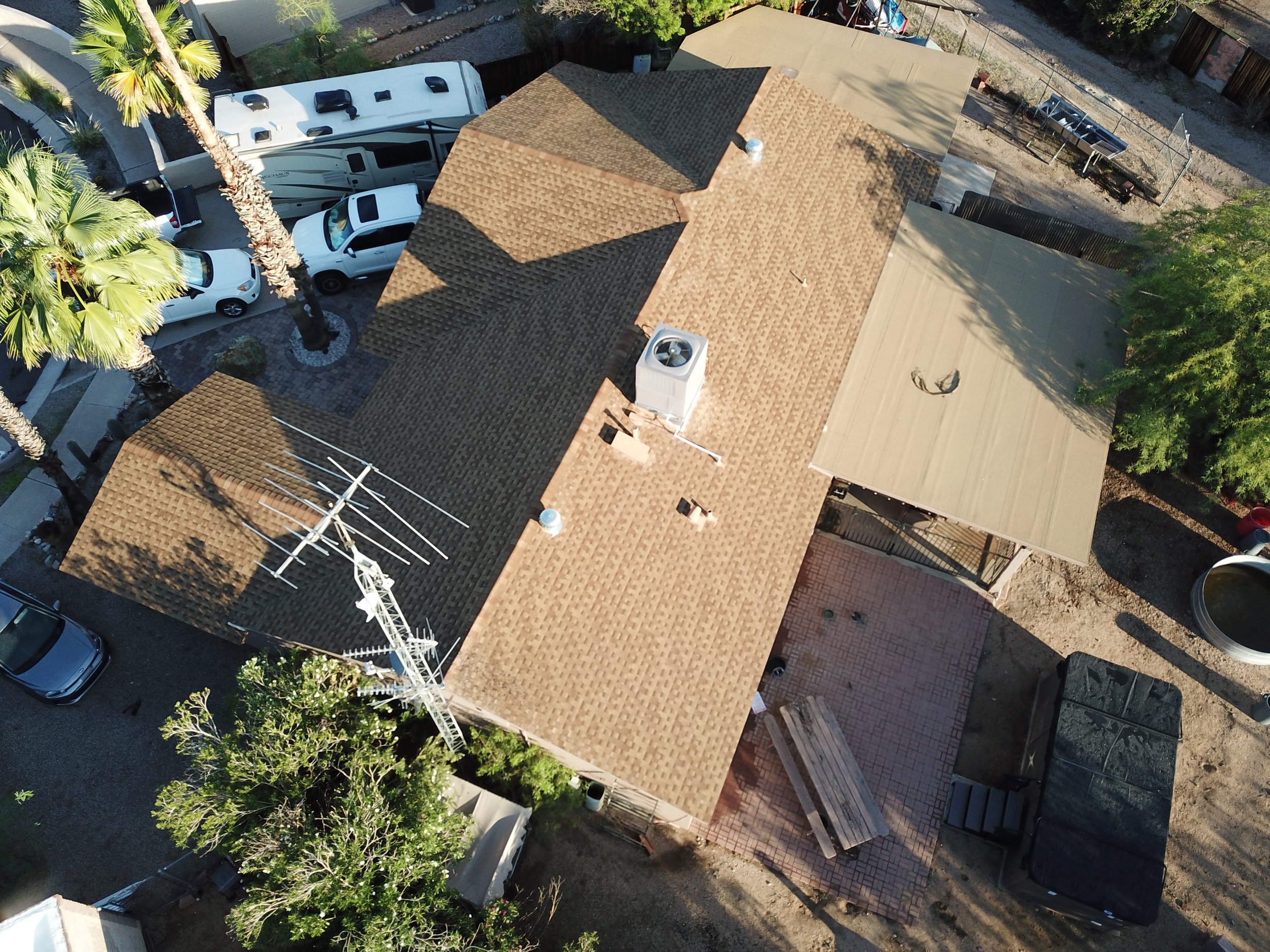Between scheduling hassles, roof diversity, and dealing with trees, solar surveying is difficult enough as it is.
Then you add roof obstructions.
Often built to blend in, these obstructions are difficult to manually measure, and you need to get the 3D measurements to optimize your shading analysis. Plus, you’re climbing up on the roof unless you have a drone.
On most roofs, there are eight types of obstructions to watch for. Here’s what you can do about them.
Common roof obstructions that impact solar
Knowing what obstructions you’re looking for will help you design the array that works best for the homeowner. The last thing you want is a “broken-smile” array where you have multiple full lines of panels with a single panel missing to accommodate a roof obstruction.
1. Vent pipes are used to ventilate plumbing systems and ensure that gases and odors leave the house. Because of this unpleasant smell, they are often placed in the middle of the roof going straight up.
2. Attic fans are mounted on the roof to help remove hot air from the attic, which means the house’s cooling system won’t need to work as hard. These are typically motorized now and can take up a lot of space, with blades reaching 2-3 feet in diameter in some cases.
3. Chimneys help ventilate the heating system of the house, whether that’s natural fire, oil-based furnaces, or other types of heating stoves. Depending on the size of the home, there might be multiple chimneys on the sides or in the middle of the roof.
4. Smoke stacks are less common in residential buildings, but you might see them in new builds in lieu of a chimney.
5. Satellite dishes may not be as common as they once were, but you might still find either old dishes still installed or new use cases, such as satellite internet. These can vary widely in size but are typically placed in the most open parts of a roof—the same parts that could be ideal for a solar array.

6. Exhaust pipes help get odors, moisture, and gases out of the house caused by kitchen appliances, clothes dryers, or bathrooms. These pipes are typically much shorter than chimneys or smoke stacks and often are painted the color of the roof, making them even harder to spot on a manual survey.
7. Shower fans are specifically designed to remove moisture from bathrooms. While they typically vent out the side of the house for lower flowers, any top-floor bathrooms might vent directly onto the roof.
8. HVAC systems–and the various wires and tubes coming from the main exterior unit–could impact conduit mapping whether that’s stopping you from using a certain route or forcing a certain route because that’s where holes have been pre-drilled to access the main electrical panel.
Managing roof obstructions
When it comes to roof obstructions, you have three main options:
-
Place the array elsewhere
-
Work around the obstruction
-
Move the obstruction
In an ideal world, you will simply place the array on another roof plane that doesn’t have obstructions in the middle. However, this only works if the house is either large enough or placed well enough that other areas of the roof get equal sunlight.
If the best possible roof plane is also where the obstructions are, discuss adjustments with the homeowner. Here is what you should share with them:
-
Array visuals: What will it look like working around versus moving obstructions?
-
Production estimates: Will moving obstructions significantly increase energy capture?
-
Alternatives: Where else could you put the panels, if anywhere?
-
Next steps: If you have in-house expertise, you can bring it up; or if you know contractors who can help them, you can offer to make an introduction.
-
Positioning: Explain the ideal placement of obstructions from a solar perspective.
-
Timelines: When you present the option of moving obstructions, explain that it may elongate the project process and communicate how you will plug back into the project once obstructions are moved.
It’s ultimately the homeowner’s choice whether to work around the obstructions, move them, or put the panels on a different roof plane.
Your job is to make sure they are informed and can make the decision that works for them. That means the pressure to give accurate data is even higher. And regardless of where you are geographically, some roofs are difficult to survey manually (to say nothing of how time-consuming surveys can be). With that in mind, the best tool you can bring to a solar survey is a drone. Not only are drones up to 5x faster than manual surveys, but they are equally if not
more accurate. Even more, designing in 3D means higher-quality designs you can use to discuss with homeowners rather than relying on memory or intuition.
Solar professionals of all stripes have a lot of pressure on them, but perhaps none more than Surveyors. Without a good survey, the whole project can go awry. Make sure you’ve got the right tools to support you, keep you safe, and help you work more quickly.






